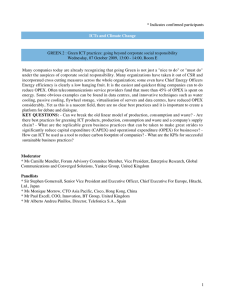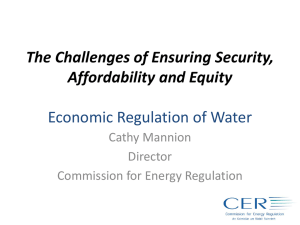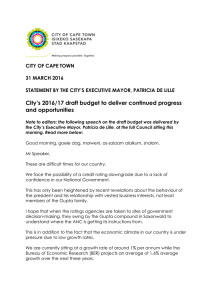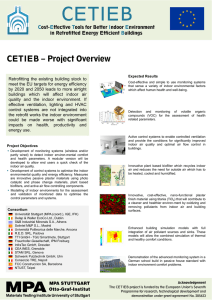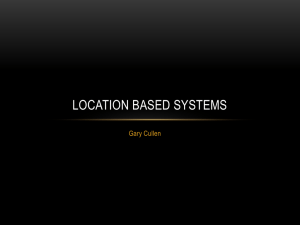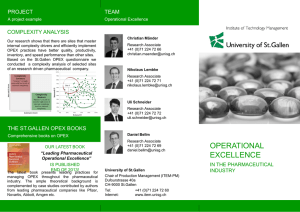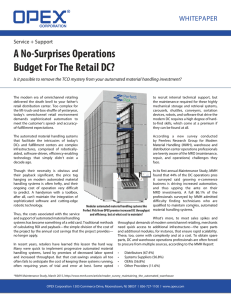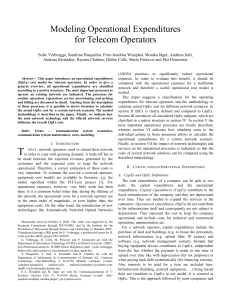Energy Efficiency: Load management potential savings in
advertisement
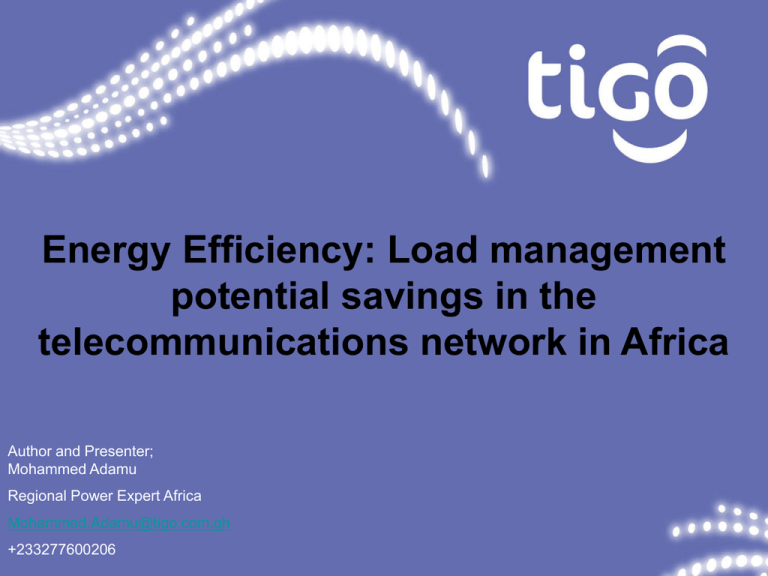
Energy Efficiency: Load management potential savings in the telecommunications network in Africa Author and Presenter; Mohammed Adamu Regional Power Expert Africa Mohammed.Adamu@tigo.com.gh +233277600206 Introduction •Apart from CAPEX, generally OPEX cost driver on the telecom network are five items; •Three of them are direct Energy cost and one is indirect. •The direct Energy cost elements is typically 50% - 60% of total Network OPEX. The figure could be up to 79% in some operations. •Above 20% OPEX savings can be achieved with load management. • This act, in addition to savings, enable deficits in global energy, Emission of CO2 and other green house gases. Note: this presentation focus mainly on BTS sites. This is because of the number of BTS site in a network. However similar structured frame may be applied to the core sites. MM/DD/YY Network Quality Page 2 A Typical BTS Site with Shelter (Plan) DB Tower Equipm ent Shelter AC Spare FENCE Gen2 Bulk Tank ATS Gen1 Load Transform er GATE Public Supply MM/DD/YY Project Name Page 3 Overview Five Network OPEX Driver Main Network OPEX Driver % age OPEX Annual Monthly YTD Generators maintenance 18 Sites electricity 14 Sites fuel 29 Sites Security 9 Sites leases 14 Sum % of OPEX Driver 74 Quantitative Highlights of archive data Monthly YTDAVERAGE OPEX-Energy= 61% AVERAGE OPEX-SITE FUEL = 29% MM/DD/YY Project Name Page 4 A sample Model of Energy Efficiency Exercise Review Operations: Load New Technologies Monitoring Innovative in operations process and system architecture Effective Control Design and system Selection Source Energy Sink Energy (Load) There are enormous savings potentials in OPEX and CAPEX of the energy system of the present telecommunications networks in Africa MM/DD/YY Project Name Page 5 Economics of Network Energy With a careful site energy model, the average; Base energy/year/site estimate = 35,040 kWh Energy for daily variable/year/site estimate = 2,920 kWh Energy/year/site estimate = 37,960 kWh Archive Annual operations total Energy estimate = 165 MWh Monthly YTD-Archive Average cost of Energy per unit = 40 Cents Monthly YTD- Worst offender Average cost of Energy per unit = 82 Cents Page 6 Highlights of Focus • Control and reduction of Energy demand in the operation • Reduce resultant average cost of unit Energy on the network • Cost appropriation and cost transfer in equipment selection and system layout architecture Page 7 Sample data on network Energy CASE 1: UNDER UTILISATION SITE NAME Site Type Total Capacity Total Capacity % Utilization % Under-utilization. % LG 2001 Indoor 11.5KVA 100 23.5 51.5 PH 2007 Outdoor 12.5 KVA 100 30 45 KN 2008 Indoor Indoor 100 32.4 42.6 Page 8 Sample data on network Energy CASE 2: IMBALANCE LOAD 3 PH Generator L1 TOT PH CAP OPT LDING PH CAP SITE PH LOAD Indoor L2 L3 12.8 12.8 12.8 9.6 9.6 9.6 0 4 5 CASE 2: IMBALANCE LOAD 3 PH Generator LG 2001 L1 PH 2006 Outdoor L2 L3 TOT PH CAP 13.9 13.9 13.9 OPT LDING PH CAP 10.4 10.4 10.4 4.3 3.2 4 SITE PH LOAD CASE 2: IMBALANCE LOAD 3 PH Generator L1 KN 2008 Indoor L2 L3 TOT PH CAP 17.8 17.8 17.8 OPT LDING PH CAP 13.3 13.3 13.3 7.2 4.5 5.6 SITE PH LOAD Page 9 Sample data on network Energy CASE 3: LOAD MANAGEMENT SITE NAME Site Type TELCO LD (%) Battery Charging (%) Cooling (%) Lights (%) Others (%) LG 2001 Indoor 27 13 37 14 9 PH 2006 Outdoor 23 30 4 34 8 KN 2008 Indoor 21 25 19 28 7 Page 10 THANK YOU
